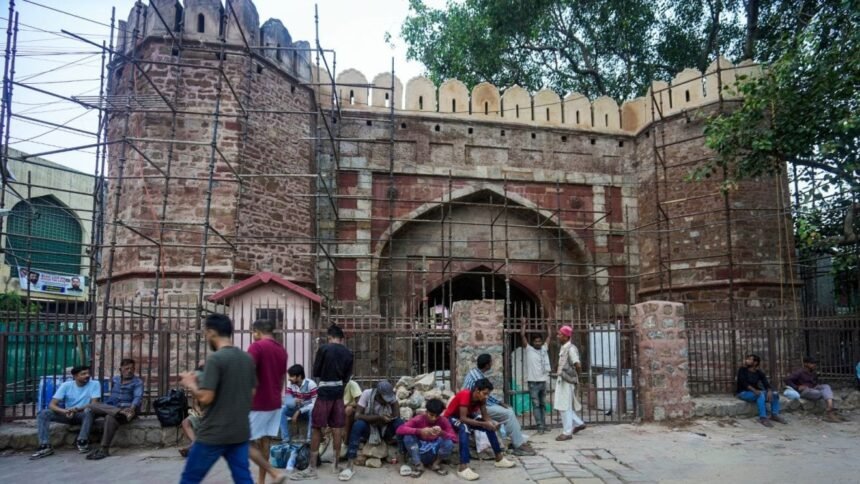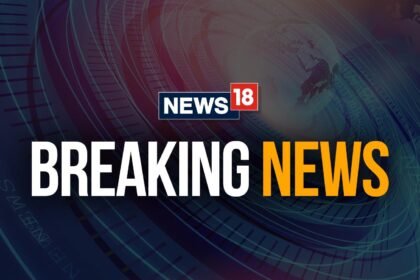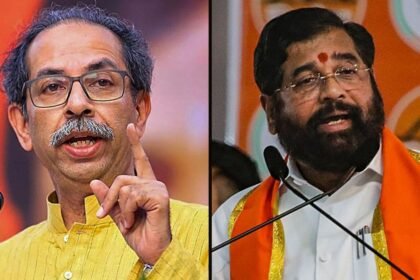Last Updated:
Declared upon the recommendation of then PM Indira Gandhi in 1975, Emergency put thousands in prison and affected almost everyone by suspending civil rights for almost two years

Turkman Gate in the Old Delhi area, seen ahead of the 50th anniversary of the Emergency imposed in 1975 by then PM Indira Gandhi. (Image: PTI/Kamal Kishore)
For two, even three, generations in India, the Emergency imposed by the then Congress government may not be an immediate memory. But its ramifications and fears linger in collective memory – conscious or subconscious – thus consequential even for those who may not even know what it was.
Today, June 25, 2025, marks 50 years from the day Emergency was declared by the President upon the recommendation of the then Prime Minister Indira Gandhi in 1975. A period that lasted less than two years – 21 months, to be precise – put thousands in prison and affected almost everyone by suspending civil rights.
INDIRA’S INTENTIONS, STATED AND CONCEITED
The immediate trigger for Indira Gandhi’s drastic step was a decision of the Allahabad High Court in 1975 that disqualified her from holding office after it found her guilty of misusing official machinery in the 1971 elections. She had already served several years as Prime Minister by then; even been valourised for India’s decisive war victory over Pakistan four years before this court verdict.
But the 1975 verdict came about when she was struggling to keep her promise of reducing poverty. A massive movement against her rule was already underway, started by students in Bihar and later widened and led by Jayaprakash Narayan, a freedom fighter once close to Indira’s father and India’s first PM Jawaharlal Nehru. The burgeoning youth unemployment and disillusionment with government corruption and inefficiency, acted as the bedrock of the sentiment against her.
When the court disqualified her on technical grounds, she was perceived to have further lost moral ground, while losing her electoral foothold anyhow. She tried to have the high court verdict overturned, but did not get total relief.
The Supreme Court, on June 24, 1975, ordered all her privileges as MP withdrawn but she was allowed to continue as PM while a final verdict was awaited. Staying in the chair, thus, gave her certain powers. And she used those immediately.
Around midnight, the then President Fakhruddin Ali Ahmed signed the proclamation declaring an Emergency citing “internal disturbance”, a term referring rather obviously to the movement led by Narayan.
DEMOCRACY DAMAGED: STERILISATIONS, ARRESTS, CENSORSHIP
Parliament no longer remained supreme and powers were vested in the executive, led by Indira Gandhi. She effectively sought to turn into an autocrat. Her son Sanjay Gandhi, the one groomed to be her successor until his accidental death some years later, was seen as the hand inside the glove.
A far-reaching move was the suspension of Fundamental Rights, even those as basic as Article 14 (equality before law), 19 (freedom of speech), and 21 (right to life and liberty). This meant citizens could not even approach courts to challenge arrests – and it was all done stating and interpreting the law.
Over a lakh people were put behind bars without trial, using the Maintenance of Internal Security Act (MISA) – RJD chief Lalu Prasad Yadav was one of them and he later named his daughter ‘Misa’ after this law.
The most prominent ones to be arrested were Jayaprakash Narayan, of course; plus several leaders of the Jana Sangh (the BJP’s predecessor) such as Atal Bihari Vajpayee and LK Advani, and former Congress members, or trade unionists and socialists, including Morarji Desai who went on to become the PM immediately after the Emergency.
Media was largely controlled or acquiesced, with some notable exceptions. There were some pockets of praise for the dictatorial move, too, citing strong and fast decisions as efficiency.
One of the breaking points came when people had to face forced sterilisations in the name of population control. Targets and rewards set for sterilisations meant government officials sometimes forced unmarried, childless men to undergo an operation that left them unable to ever have kids. This drive was widely seen as among the prominent reasons for a popular sentiment against the Emergency.
Massive slum demolitions were carried out, including the most infamous one at Delhi’s Turkman Gate. Citing urban beautification and development, thousands were left homeless and it was here that several protesting residents, who refused to vacate the area, were killed when a demolition drive was carried out by the authorities.
Centralising powers, several state governments were pressured to quit or dismissed, while the judiciary faced criticism too. Something had to give.
PRESSURE FROM WITHIN AND OUTSIDE
Constant pressure from underground resistance movements, using pamphlets and newsletters (the social media of the time), worked against Indira Gandhi. There was mounting international criticism, including from foreign governments, human rights organisations and global media.
Indira lifted the Emergency on March 21, 1977, and announced general elections. Predictably, her Congress party suffered a massive defeat — its first loss since Independence in a Lok Sabha election.
A newly formed Janata Party came to power, clubbing anti-Indira factions of the Congress, Atal-Advani’s Jana Sangh, socialist parties, and even the Communists. Morarji Desai, a former Congress leader, became India’s first non-Congress PM.
The internal contradictions of such a party, coupled with new ambitions unlocked after the removal of the Congress behemoth, meant this government could not survive more than around three years.
Indira eventually returned to power in 1980. But the Emergency had already led to major changes in the Indian electoral-democratic space.
UNDOING THE DAMAGE
During the Janata Party rule, Parliament brought in the 44th Amendment to the Constitution in 1978. It restricted the grounds for declaring an Emergency to “armed rebellion, war or external aggression” (replacing “internal disturbance”). Among other things, it also ensured that fundamental rights could not be suspended.
Politically, it is seen by many as the beginning of the decline of the Congress, though Indira’s assassination in 1984 gave it a massive mandate. The party has struggled, despite apologies and alibis, to shake off the negative legacy. Even today, when Rahul Gandhi accuses the BJP and PM Narendra Modi of undermining the Constitution, he has to field questions about the Emergency.
Beyond electoral politics, Emergency was a seismic social moment, captured in books and movies to this day. It, however, took three decades for it to enter official political science textbooks, ironically under the Congress-led UPA government in 2007. Debates continue to rage over the exact contents.
Emergency, thus, carries a complicated history: from Indira’s misuse of power to the President’s rubberstamp approval, to popular unrest and her eventual loss in elections; and then her return to power only three years later.
Analysts see in it the complex nature of public memory, which can oscillate wildly within a decade, from her 1971 demigod status to her big fall in 1975-77, and then a rise again in 1980. They said whatever happened after that still carries the echoes or traces of the mid-1970s.

Oindrila Mukherjee is a senior sub-editor who works for the rewrite and breaking news desks. Her nine years of experience in print and digital journalism range from editing and reporting to writing impactful st…Read More
Oindrila Mukherjee is a senior sub-editor who works for the rewrite and breaking news desks. Her nine years of experience in print and digital journalism range from editing and reporting to writing impactful st… Read More
- First Published:






